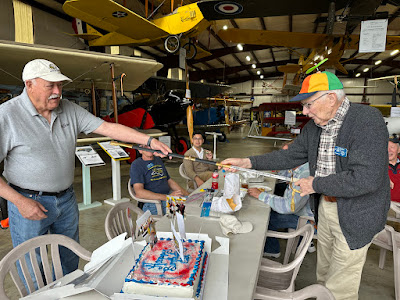I’ll admit at times it’s been a grind. A hurricane came close to wiping us out on September 28, 2024. Now, 10 months later, our great airport people have rallied, begun replacing or rebuilding airplanes, removed damaged hangar doors and replaced them, and are tuning up for a terrific flying season.

There have been improvements to the airfield beyond just fixing up the damage from the storm - our members (all the hangar tenants are members of the Air Museum) have chipped in time and effort to improve the property.
The Kolb experiment did not turn out well for Mark and me. The early test flights revealed issues that had to be addressed and
after a landing gear issue on the third test flight we called it quits and sold it to the factory to be rebuilt and resold. Mark is partnering with Steve Murray (RV-8 and -10 builder who rebuilt his -10 after the storm! At this point I’m still looking.All in all, we’ve recovered pretty nicely from our misfortune of last September and are moving back to normal.
Great news from Tim, our RV-12 builder! After 4 years and 4 months his airplane has been blessed by the FAA and he has his Airworthiness Certificate! Now the program of test flying followed by local flying to work out any bugs and his airplane will be ready for some fun trips.
That’s about it for the mid-year report, leaving out a lot but most of that is the long slog back. It’s so nice to breathe a little and watch airplanes fly - even from the sidelines.





























